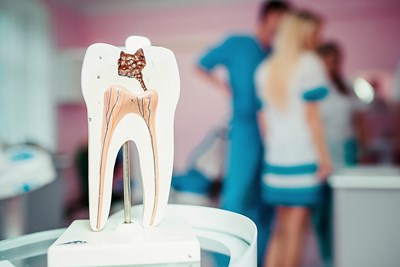Periodontal disease is the result of bacteria, combined with mucus and other particles, creating plaque and tartar on your teeth. Gingivitis, the initial stage of periodontal disease, may only cause redness, inflammation, and gum bleeding—it is fairly easy to treat.
However, The resulting toxins eventually cause the teeth and gums to start destroying themselves in the advanced form of periodontal disease, known as periodontitis—it can require more extensive forms of treatment.
The appropriate treatments depend largely on how advanced the case of periodontal disease is, as well as other factors, like which symptoms have appeared. Here’s a look at periodontics procedures and which treatment is appropriate for your case.
Appropriate Procedures for Gingivitis
Less invasive measures are generally sufficient when periodontal disease has yet to progress past the first stage, gingivitis. In many cases, a more thorough cleaning may be sufficient to remove built up tartar and bacteria.
For example, scaling is used to clean plaque and tartar not only off the surface of the teeth, but also out from under the gum line as well. The bacteria goes with it, which often allows the gums to return to a healthier state. Root planing actually smooths rough spots on the roots of the teeth so that bacteria has less places to gather.
These methods can actually prevent further issues from developing, but not always. Medication may be necessary in tandem with these more mild methods, such as topical or oral antibiotics, or implanting tiny chips with antibiotics or chlorhexidine (a strong antiseptic solution) to keep bacteria in check.
Surgical Options
If scaling or root planing aren’t sufficient for clearing up periodontal pockets and other signs of gum disease, flap surgery may be necessary. The gums are actually pulled away from the teeth, allowing a deeper cleaning, before being sutured back into place. This can also help tighten up the gums grip on the teeth, if symptoms have loosened their fit.
If you have severe pockets, your periodontist may suggest a pocket reduction procedure. Tartar and bacteria are cleaned out before the gums are fitted back to the teeth. Getting rid of pockets means there’s less places for bacteria to hide, which means symptoms can be more easily controlled.
Grafting and Regeneration
If your periodontal disease has progressed to the point that the gums and bone are being destroyed, grafting surgeries may be appropriate. For example, when the gum line has receded, exposing the tooth roots, gum grafting utilizes tissue from the hard palate on the roof of the mouth to replace it, easing sensitivity, improving appearance, and allowing the receding gums to regenerate or stop receding.
Bone grafts can help when oral bones are being destroyed, and guided tissue regeneration involves inserting a small piece of fabric between bone and gum to keep the gums from growing into the spots where the bone should be, allowing both to regrow healthier and more fully.
Implants
Once periodontal disease has progressed to the point of causing tooth loss, a combination of these procedures may be necessary to return the mouth to a healthy state. At this point, if you’ve experienced any tooth loss, there are options beyond dentures and partials for getting back to a full set of teeth.
Dental implants, or prosthetic teeth, can be permanently placed in or on the bone. In fact, a whole new set of teeth can be implanted this way! When there isn’t sufficient bone in the jaw to attach implants too, the bone itself may be implanted to ensure a successful set of dental implants. However, it’s important to have your oral health well in hand before undergoing such extensive procedures—if periodontitis is still running rampant, there’s very little point in replacing the bone and teeth when bone and tissue are just going to be destroyed again. Talk to your periodontist about the best options for your mouth.



